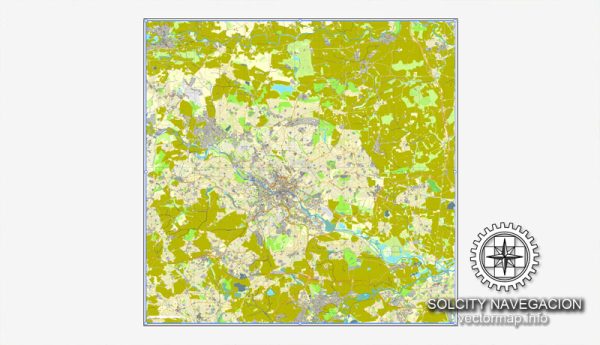Leeds, located in West Yorkshire, England, has a rich history of urban development that spans centuries. The city’s growth and transformation have been influenced by various economic, social, and cultural factors. Here is a brief overview of the history of urban development in Leeds:
- Medieval Period (5th-15th centuries):
- Leeds has ancient origins, with evidence of a settlement dating back to the 5th century. The name “Leeds” is believed to have Anglo-Saxon origins, referring to a wooded area or a slope.
- During the medieval period, Leeds was a market town, and its economy was primarily based on agriculture and trade.
- Industrial Revolution (18th-19th centuries):
- The Industrial Revolution had a profound impact on Leeds, transforming it from a market town into an industrial powerhouse. The city became a major center for woolen and linen manufacturing.
- The construction of the Leeds and Liverpool Canal in the late 18th century facilitated transportation and trade, contributing to the city’s economic growth.
- The advent of the railway in the mid-19th century further connected Leeds to other industrial cities, boosting commerce and industry.
- Textile Industry and Innovation:
- Leeds was a hub for the textile industry, with numerous mills and factories. The city played a significant role in the production of woolens, cloth, and other textiles.
- Innovations in textile machinery, such as the spinning jenny and the power loom, played a crucial role in Leeds’ industrial development.
- Victorian Architecture:
- The prosperity of the 19th century is reflected in the city’s architecture. Many grand Victorian buildings were constructed during this period, including the Leeds Town Hall, completed in 1858, and the Corn Exchange, built in 1864.
- Post-War Development:
- Like many British cities, Leeds faced challenges during and after World War II. The city underwent post-war reconstruction, with efforts focused on rebuilding and modernizing infrastructure.
- Large-scale housing developments were undertaken to accommodate the growing population.
- Contemporary Urban Renewal:
- In recent decades, Leeds has undergone significant urban renewal and redevelopment projects. The city center has seen the construction of modern office buildings, shopping centers, and residential complexes.
- The waterfront area along the River Aire has been revitalized, with the development of Clarence Dock and other projects, creating a vibrant waterfront district.
- Cultural and Educational Hub:
- Leeds has evolved into a cultural and educational hub, with several universities and a thriving arts scene. The city hosts cultural events, festivals, and has numerous museums and galleries.
- Transportation Infrastructure:
- Leeds has continued to invest in its transportation infrastructure, including the expansion of the Leeds Bradford International Airport and improvements to the road and rail networks.
Overall, the history of urban development in Leeds reflects its transition from a medieval market town to a thriving industrial center and, ultimately, a modern, diverse city with a strong economy and vibrant cultural scene.


 Author: Kirill Shrayber, Ph.D.
Author: Kirill Shrayber, Ph.D.